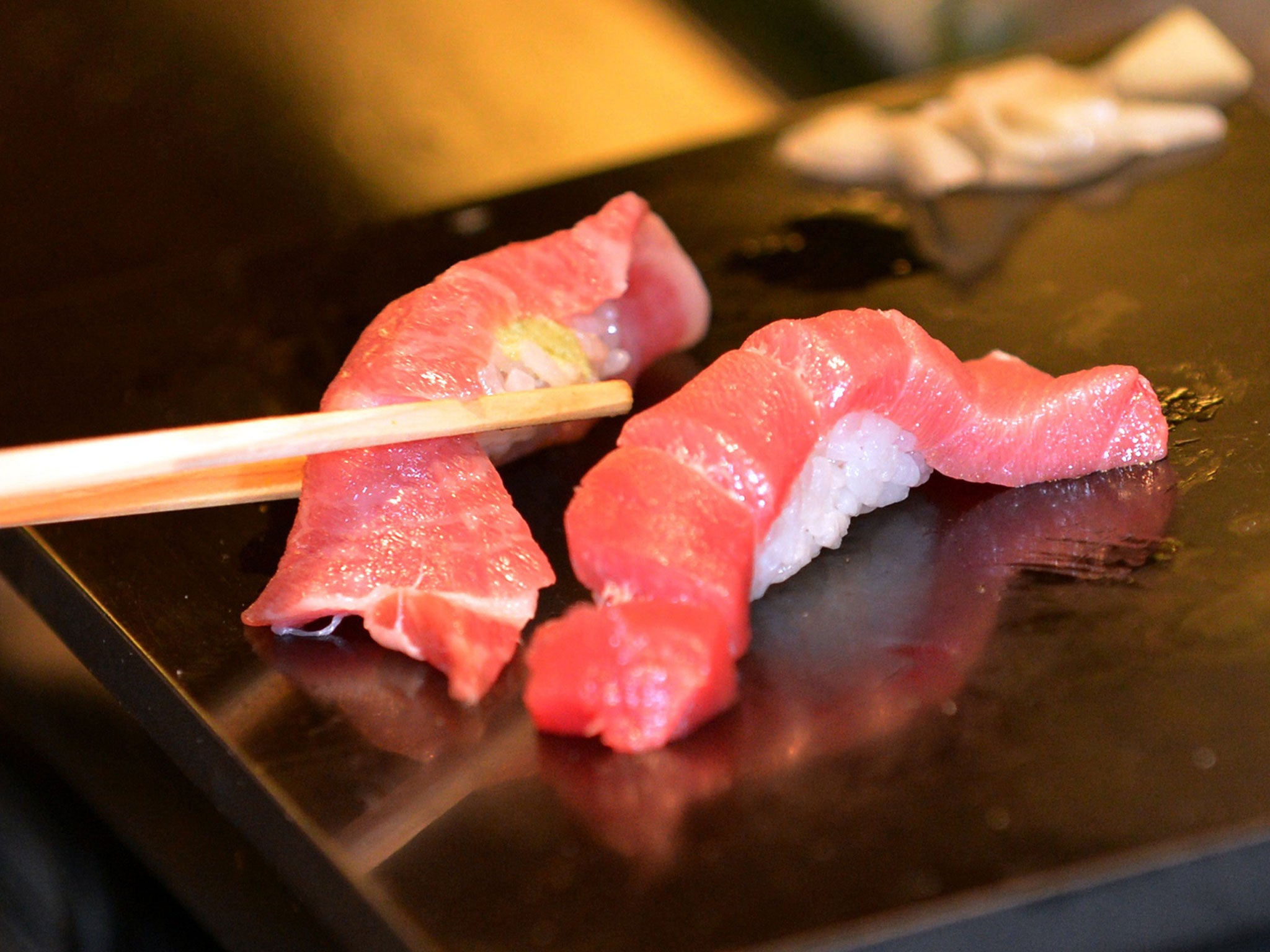Japanese women learning the art of sushi are challenging a national tradition of male chefs
There is a belief women's warmer body temperature leads to inferior food

In a nation known for its poor record on gender equality, some workplaces in Japan have been off-limits for women for ages. The sushi counter is one of them. Sushi is emblematic of Japan’s profound cultural influence, crossing borders and acquiring non-native ingredients such as avocado as it goes. That, however, is the limit of the cultural interchange.
Deeply rooted stereotypes such as the so-called “Edo-style” macho demeanour of sushi chefs, and a belief that women’s warmer body temperature leads to inferior tasting food, have kept sushi preparation an almost exclusively male domain in Japan. But some women are out to challenge tradition. They’re learning the art of sushi at a time when the government is emphasising a greater role for women to offset Japan’s shrinking workforce.
“I think women are better at communicating with customers, and they’re kind and gentle,” said Yuki Chidui, 28, sushi chef and manager at the all-women Nadeshico sushi restaurant in Tokyo.
Unlike the usual itamae, as sushi chefs are called, with their closely cropped hair and crisp cocky language, Ms Chidui is softly-spoken and gentle, wearing a white summer kimono splashed with pink blossoms.
She has purposely avoided trying to look the part. Her store’s motto is “fresh and kawaii” (“cute”). Flyers depict her as a doe-eyed manga character. Ms Chidui’s assistant, who switched from working as a tour-bus guide two months ago, wears manga buttons on her outfit.
Ms Chidui had been in a rut and felt confined working at a department store when she decided to gamble on starting her own business. It hasn’t been easy. She has endured insults and questioning of her abilities since opening Nadeshico five years ago. She said people have ridiculed her restaurant when they walk in. Sometimes male customers taunt her and ask: “Can you really do it?”
There are no official statistics on the number of female sushi chefs in Japan but they are rare, according to the All Japan Sushi Association, which groups 5,000 sushi restaurant owners nationwide and estimates Japan has 35,000 sushi chefs in total.
Forbidding women in certain spots dates back centuries in Japan, where the culture viewed menstruation as tainted, a primordial fear Western feminists have also historically had to debunk.
The sumo ring is another place billed as too sacred for women. These days women routinely take part in amateur sumo, but the number of female professional sumo wrestlers still remains zero.
In recent years, the Japanese government has made encouraging women in the workforce its mission, seeing that an already stagnant economy would only get worse unless women are freed from their status of homemaker and child-bearer to contribute more to production and growth.
The government wants women to fill 30 per cent of leadership positions by 2020, an ambitious goal given that women now make up only eight per cent of such positions in companies hiring 100 people or more.
Even within that effort, there is no crackdown on specific industries barring women, said Takaaki Kakinuma, an official at the government Gender Equality Bureau Cabinet Office. “The initiative is about getting women in leadership positions,” he said.
Becoming a sushi chef is an arduous process, requiring several years to learn how to made nigiri (fish on rice), and at least a decade to run a restaurant properly. Trainee chefs aren’t usually permitted to hold a knife for the first year, being assigned instead to deliveries and dish-washing.
Masayuki Tsukada, 34, who started training to become a sushi chef at 18, shrugs off how there are so few female colleagues. “It’s just prejudice,” he said, stressing that what counts is experience, such as being able to talk and keep straight all the orders and names of fish at the same time as well as preparing the sushi in front of the customer.
Establishments where Tsukada and other professionals work charge 10,000 yen (£52) or more for dinner, about three times what Nadeshico charges. Their menus tend to be fancier, with exotic fish, such as marbled tuna or rare types of baby fish.
But the profession is opening up, albeit gradually. Tokyo Sushi Academy offers two-month crash courses in sushi-making, and about a fifth of the Japanese students are female. A third of the students from abroad are women.
“More women are accepted as sushi chefs at casual restaurants, and more so abroad than they are in Japan. The traditional sushi places are still male-dominated,” said Sachiko Goto, the academy’s principal.
Still, those enjoying their meal at Nadeshico said they liked what they were getting.
“This tastes so good,” said Masataka Nakayama, 40, a physical therapist, guzzling down beer and sushi.
He came from Sendai, north-eastern Japan, on the bullet train with his friend to check out back-to-back concerts by AKB 48, an all-woman singing-and-dance group.
Sushi at Nadeshico, served by women, seemed the perfect way to end the visit, he said.
Ms Chidui laments how some Japanese are forgetting the delights of sushi and turning to eat pizza and gyudon – sliced beef over rice. The only sushi they might have had rolled off a robotic conveyor belt, known as kaiten zushi, she says.
But she feels she is finally getting good at it, and hopes more women will follow and be the new wave of sushi. “This is really fun,” she said.
Join our commenting forum
Join thought-provoking conversations, follow other Independent readers and see their replies
Comments